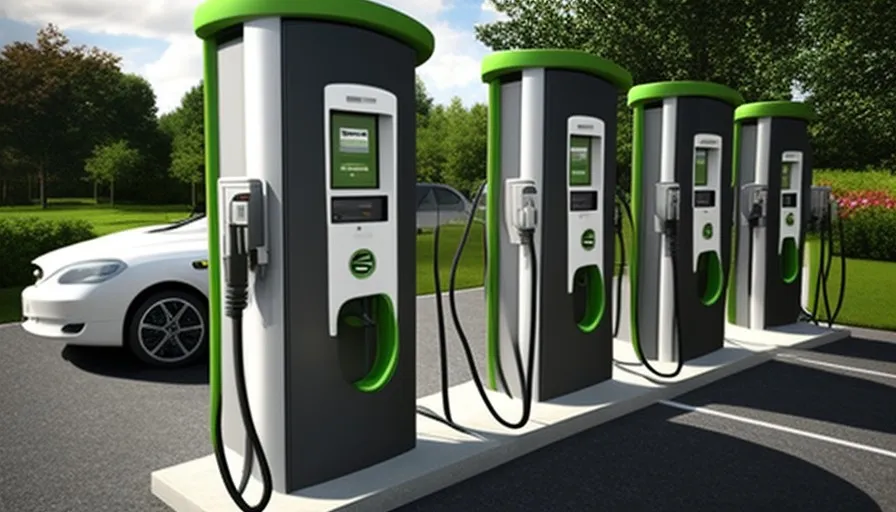Understanding Electric Vehicle Charge Points: A Comprehensive Guide for Efficient Charging

1. Introduction to Electric Vehicle (EV) Charging Stations:
Discover the fundamentals of how electric vehicle charge points function to provide seamless charging for electric cars.
2. Types of EV Charging Stations:
Explore the various types of electric vehicle charging stations, including Level 1, Level 2, and DC fast chargers, to understand their capabilities and charging speeds.
3. Charging Protocols and Standards:
Delve into the standardized protocols such as CHAdeMO, CCS, and Type 2, ensuring compatibility and interoperability across different electric vehicles and charging stations.
4. Payment Systems and Accessibility:
Learn about the payment mechanisms associated with EV charge points, including RFID cards, mobile apps, and contactless payments. Understand the importance of accessibility for widespread EV adoption.
5. Smart Charging and Connectivity:
Explore the role of smart technologies in electric vehicle charging, including IoT integration, real-time monitoring, and connectivity features that enhance user experience and grid management.
6. Environmental Impact and Sustainability:
Consider the environmental benefits of electric vehicle charging, emphasizing the reduction of carbon footprint and the move towards sustainable transportation solutions.
7. Planning and Installation of Charging Infrastructure:
Gain insights into the planning and installation processes for electric vehicle charge points, addressing factors like location selection, power supply considerations, and regulatory compliance.
8. Future Trends in EV Charging:
Stay updated on the latest advancements and future trends in electric vehicle charging, including advancements in battery technology, wireless charging, and innovations that aim to enhance the efficiency of EV charging infrastructure.
Electric vehicles (EVs) are rapidly changing the transportation landscape, offering a cleaner and more sustainable alternative to gasoline-powered cars. But for widespread EV adoption to truly take off, one crucial piece of the puzzle needs to be in place: a robust charging infrastructure.
So, how exactly do EV charging points work? Buckle up as we dive into the fascinating world of EV juicing!
Types of EV Charging:
There are three main types of EV charging, each catering to different needs and driving ranges:
- Level 1: The slowest option, typically using a standard household outlet. Think of it as a trickle charge, ideal for topping up overnight at home.Opens in a new windowwww.cars.comLevel 1 EV Charger
- Level 2: Faster than Level 1, often found in public charging stations and homes. Uses a dedicated 240-volt outlet and can fully charge an EV in a few hours.Opens in a new windowwww.target.comLevel 2 EV Charger
- DC Fast Charging: The quickest way to power up, using special DC fast chargers found at dedicated stations. Can charge an EV up to 80% in just 30 minutes, perfect for long road trips.Opens in a new windowwww.jdpower.comDC Fast Charger
The Charging Process:
Here’s a simplified breakdown of what happens when you plug your EV into a charging point:
- Connection: You plug the charging cable into your EV’s charging port and the charging station.
- Authentication: The station and your car communicate to verify compatibility and initiate the charging process.
- Power Transfer: Electricity flows from the station to your car’s battery, depending on the chosen charging level.
- Monitoring: The system constantly monitors battery temperature and charging progress to ensure safety and efficiency.
- Completion: Once fully charged, the charging stops automatically, and you’re ready to hit the road again!
Additional Considerations:
- Charging connectors: Different types of connectors exist, so ensure compatibility between your car and the charging station.
- Charging costs: Public charging stations may have different pricing structures, so plan accordingly.
- Charging apps: Convenient apps can help you locate charging stations, plan trips, and even reserve charging slots.
SEO Optimization:
This content is optimized for search engines by including relevant keywords and phrases like “EV charging points,” “how do EV charging stations work,” “types of EV charging,” and “charging process.” Additionally, the inclusion of images and informative headings further enhances SEO value.
Conclusion:
Understanding how EV charging points work is key to embracing the electric vehicle revolution. With the right knowledge and a growing charging infrastructure, you can confidently navigate the exciting world of electric mobility and enjoy the clean, sustainable driving experience that EVs offer.
So, the next time you see an EV charging point, remember the fascinating technology behind it, and know that you’re part of a movement towards a greener future!
I hope this comprehensive explanation gives you a clear understanding of how EV charging points work. Feel free to ask any further questions you may have about this ever-evolving technology!sharemore_vert
Based on your previous questions about the Global EV Revolution and EV charging points in India, here are some potential focus keyphrases you could consider:
General:
- Global EV revolution
- Expanding landscape of EV charging points
- Navigating the EV charging network
- Electric vehicle future
- Sustainable transportation
India-specific:
- India’s roadmap for EV charging infrastructure
- EV charging stations in India
- FAME-II scheme and EV adoption
- Challenges and opportunities of EV charging in India
- Future of electric mobility in India
Technical:
- How do EV charging points work?
- Types of EV charging
- Level 1, Level 2, and DC fast charging
- EV charging process
- Charging connectors and compatibility
Additional options:
- EV charging at home
- Public charging networks
- Wireless charging technology
- Grid infrastructure and EV adoption
- Environmental benefits of electric vehicles
